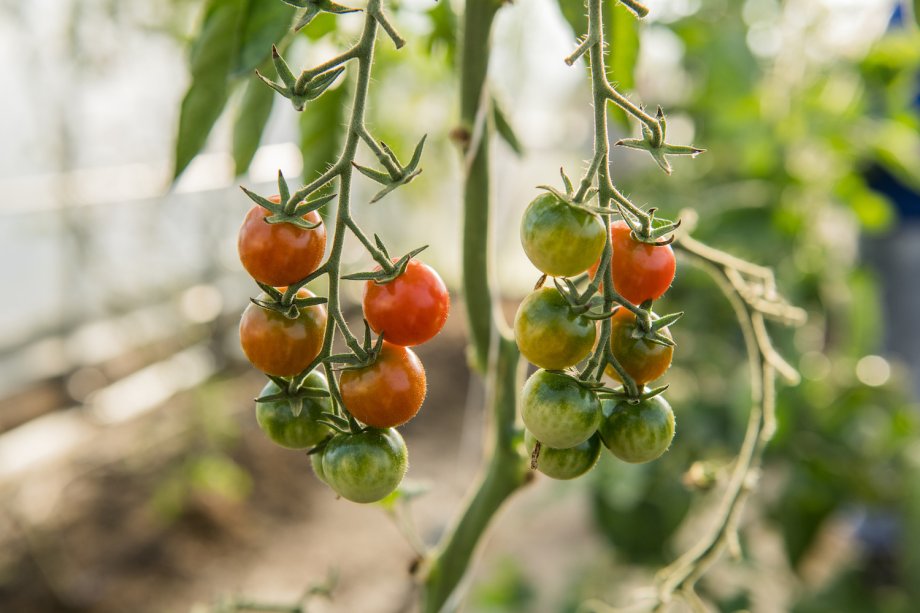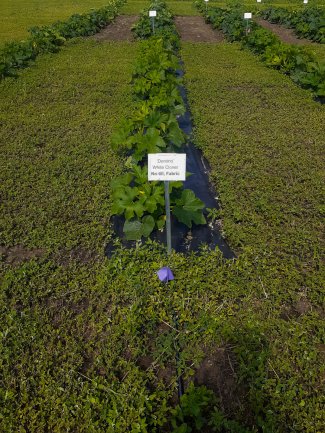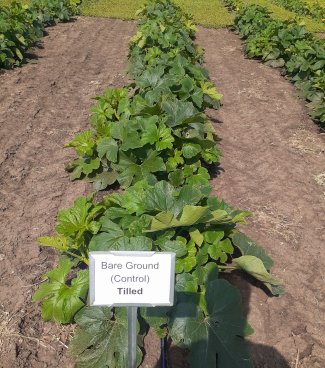
Organic farming—in the United States and South Dakota—is on the rise.
According to the Pew Research Center, the number of organic farms in the U.S. was estimated around 14,000 in 2016—a 56% increase from just five years earlier. In 2021, despite economic and production challenges, total sales of organics reached an all-time high at $11.2 billion.
Researchers from South Dakota State University have taken notice of this growing industry and are looking for ways to address the major challenges organic producers face.

Through a four-year, $749,998 grant from the USDA National Institute of Food and Agriculture, SDSU assistant professor Sutie Xu is looking to demonstrate if "living mulch" can improve soil health, agronomic performance and the profitability of organic vegetable systems.
A changing industry
"Organic farming is developing very quickly in the U.S.," said Xu, a researcher in SDSU's Department of Agronomy, Horticulture and Plant Science. "Based on data from 2022, in South Dakota, there were only 138 organic farms, which was lowest number among the states in Midwest, and less than 15 of them were used for vegetable production. South Dakota stakeholders have expressed great interest in information on organic vegetable management strategies to improve profitability and sustainability."
The roots of organic farming can be traced back to the widespread use of herbicides, pesticides and fertilizers in conventional food production systems in the early 1900s. As a natural alternative, some producers began growing crops without any additives. Organic produce quickly grew in popularity as people began looking for different food options at grocery stores.
Today, U.S. Department of Agriculture regulations prohibit organic producers from using pesticides and/or synthetic fertilizers and outline requirements on crop and soil management.
Fertilizers, despite their negative human and environmental impacts, have proven benefits for crop production systems, particularly in terms of the yield that can be produced. Yield size is one of the primary struggles for organic producers. Smaller yield sizes require more land to be farmed (in comparison to conventional farming). More land means a greater environmental impact—a concern to researchers and organic producers.
"Without the chemical inputs, it can be difficult to get sufficient nutrients to the organic vegetables," Xu said. "Producers have to instead rely on organic nutrients, like livestock or chicken manure. However, not all farms have access to manure. Alternative options are needed."

Finding a natural alternative to synthetic fertilizer would greatly help the viability, sustainability and profitability of organic farms. Xu is investigating ways to improve vegetable yields on organic farms in South Dakota with living mulch.
Cover crops as living mulch
Cover crops are a proven sustainable agriculture practice that is becoming widely adopted. Following a cash crop harvest, cover crops—like rye or buckwheat—are planted. After a few weeks of growth, the crop will cover the soil, thus slowing erosion and improving soil health. Research conducted by faculty members at SDSU show that cover crops improve cash crop yields.
For this project, Xu and her collaborators Kristine Lang, assistant professor in the Department of Agronomy, Horticulture and Plant Science; Peter Sexton, associate professor and SDSU Extension Sustainable Cropping Systems Specialist; Thandiwe Nleya, professor in the Department of Agronomy, Horticulture and Plant Science; Rhoda Burrows, professor in the Department of Agronomy, Horticulture and Plant Science; Tong Wang, associate professor in the Ness School of Management and Economics; and Navreet Mahal have proposed using perennial clovers in a similar way to cover crops. Instead of planting these crops following a harvest, the clovers will be planted before the three vegetables being utilized in this study: squash, cabbage and sweet corn. The clovers will function as a "living mulch" as they grow alongside the cash crops.

Clovers as living mulch have been previously shown to suppress weeds, retain water and improve the soil health. Clovers are also a "nitrogen fixer" and can provide nitrogen to crops in a similar fashion to synthetic fertilizers.
"Legumes can sequester nitrogen from the atmosphere, and clovers are a type of legume," Xu said.
During growing seasons, the research team will take soil and plant samples to determine what benefits the living mulch is providing to the soil and the crops. Following the trial phase, the research team will conduct an economic analysis.
"The data generated from this project will fill an important research gap in organic vegetable production and provide valuable information on sustainable vegetable production," Xu said.
Research field days and webinars are also planned during the latter years of the project to share the newfound knowledge on organic vegetable production systems.
"This project will provide information and knowledge to producers and other stakeholders on sustainable organic vegetable management with lower reliance on manure and tillage," Xu said.
While the U.S. has seen an exponential rise in the number of organic farms, South Dakota's growth has been considerably slower, primarily due to challenging climatic conditions. Xu is hopeful this research will provide valuable information to benefit, and ultimately grow, organic farming in South Dakota.
"We hope to promote organic vegetable production in South Dakota and other areas with similar climatic conditions and therefore contribute to growth of overall organic farming in the U.S.," Xu added.
- Contact:
- Telephone number: 605-688-6161
Republishing
You may republish SDSU News Center articles for free, online or in print. Questions? Contact us at sdsu.news@sdstate.edu or 605-688-6161.

